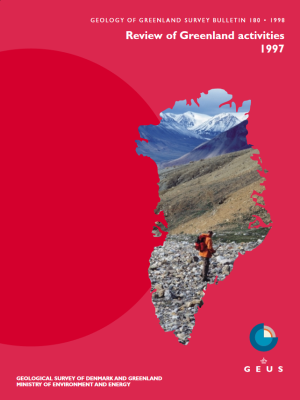A reassessment of the timing of early Archaean crustal evolution in West Greenland
DOI:
https://doi.org/10.34194/ggub.v180.5091Abstract
In last year’s Review of Greenland activities, Kalsbeek (1997) divided the recent history of geochronology into three successive periods: 1. single-sample K-Ar and Rb-Sr mineral or whole-rock age determinations; 2. Rb-Sr and Pb/Pb whole-rock isochrons and multigrain zircon U-Pb isotope data; 3. the present, where ‘single’ zircon U-Pb data are predominantly used. To these three, we would propose adding a fourth, namely a combination of all three, in order to achieve the maximum age information within complex terrains. For an early Precambrian terrain like that of West Greenland, we consider that the combined use of at least the last two approaches is essential (to which should be added the Sm-Nd method). In recent years, study of the geochronological evolution of the Godthåbsfjord and Isua regions has been dominated by rapid and precise ion-probe U-Pb dating of complex-structured zircons, and it has become fashionable to regard the wide range of zircon dates, and particularly the oldest, as giving the age of rock formation. Dates obtained from whole-rock Rb-Sr, Sm-Nd and Pb/Pb regressions have been regarded as too imprecise for adequate age resolution, whilst constraints on crustal evolution imposed by initial Sr, Nd and Pb isotope ratios have been summarily dismissed or totally ignored. We consider that this sole dependence on ion-probe dating of zircon can lead (as, indeed, in the early Archaean of West Greenland) to a potential misinterpretation of the timing of crustal evolution, especially in those cases where little or no information regarding the relationship between measured date and internal grain structure is available. Figure 1 shows the localities mentioned in the text.
Downloads
Published
Issue
Section
License
This article is distributed under a CC-BY 4.0 licence, permitting free redistribution and reproduction for any purpose, even commercial, provided proper citation of the original work. Author(s) retain copyright over the article contents.


